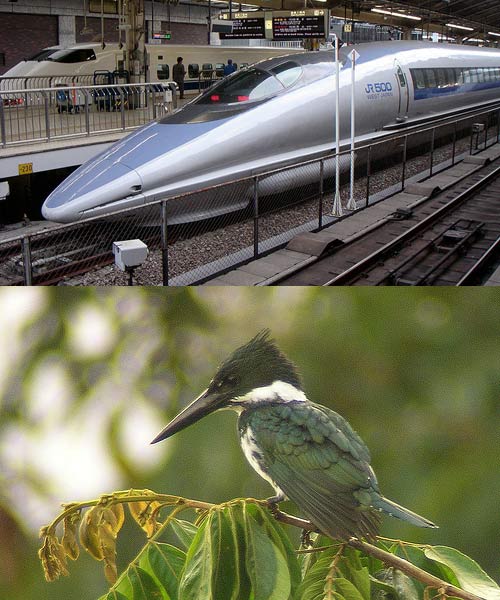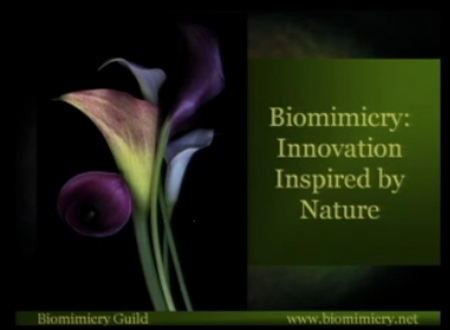Biomimicry: 3.8 Billion Years of Natural R&D
/Reality Check
Consider that Nature runs on sunlight and creates no waste. I learned that humans, on the other hand, produce 96% waste, in creating 4% of product. This is a mind-boggling statement, and I’m still reeling from it. This “fact” is impossible to comprehend, but then biomimicry has much to teach us.
It seems that Mother Nature is a brainiac.
All forms of life cause a lot of commotion in the biosphere: creating, moving, and consuming. But we humans are the species creating so much waste and disruption, that intelligent minds question our ability to survive.
Getting Over Sustainability Speedbumps
Janine Benyus and the Biomimicry movement are gaining enormous respect in the world of product innovation and design. The biometric path is simple and described in four steps: quieting human cleverness, listening to life’s genius, echoing what we learn, and giving thanks.
Partnering with Nature is an eyebrow-raising metaphor for super-rational human minds. So the Biomimicry movement has successfully outlined 12 big ideas from Biology to focus our attention on strategies that Nature employs to sustain herself. They are:
1. Self-Assembly
2. COs as a Feedstock
3. Solar Transformation
4. The Power of Shape
5. Quenching Thirst
6. Metals without MIning
7. Green Chemistry
8. Timed Degradation
9. Resilience and Healing
10 Sensing and Responding
11. Growing Fertility
12. Life Creates Conditions Conducive To Life.
Life’s Design Brief is Simple
Watch now as Benyus makes a convincing TedTalks case for creating biomimetric and biologically-inspired products and services to meet the challenges of modern life.
My mind has NEVER been stretched further in 23 minutes of listening, watching, and learning about the intellectual, technical and biological wisdom of Nature, left on her own, as the champion adapter to the challenges of existence on our planet.
The film is breathtaking and moving in scope, as it challenges us humans to consciously emulate life’s genius.
In reality, Nature offers even more profound answers to the challenges of modern existence. Her many offerings nurture not only our souls and spirit, but our minds and intellect.
We’re learning that Nature’s lessons can be technical, mechanical solutions to more “rational” problems of 21st century living. They involve architecture and product design. Increasingly our relationship with Nature isn’t only about reverie and escape. We see her as a provider of Smart Solutions.
The ideology of limitless discovery and expansion — the belief that the world exists in never-ending bounty to feed our private hungers, especially an American hunger — is now challenged. Yet, the majority of us Americans don’t believe that the oceans will go lifeless or that oil wells will go dry. We resent these doom and gloom scare tactics settling over our lives, like a smoky haze.
Technology will figure things out. This is the good side of business of having a vested interest in keeping us alive. After all, profits require consumers.
 via Treehugger.comCocooned No More
via Treehugger.comCocooned No More
Walking along the back roads of my beloved Carversville, these films weigh heavily on my mind. I’m so excited that Spring is soon, seducing me with sweet-smelling roses buses and flirtatious fireflies in the night air.
I can’t imagine these gorgeous trees not being here to greet me. Or the sign that reminds me of the historic, deeply American roots of the land I walk on.
ET, Please Call Home about these hummingbird-drones
Being a devoted sensualist, I’ve always looked to Her for inspiration on living a high-quality life. But I’ve never considered the idea of being surrounded by millions and millions of tiny geniuses, trying to tell us how to proceed into the future.
Small Is the New Big
Where we Americans seem to differ from other cultures, is in the idea that winning comes at the expense of losers. We like to win Big.
Trying to comprehend the concept advanced by Biomimicry that we create 96% waste in pursuit of 4% of product, Big takes on an entirely different definition in my mind.
Perhaps evolutionary robotics is the answer to our human dilemma. And many results may not be what we expected if spy technology has anything to do with the future of biomimicry.
We humans don’t seem so smart these days. At least robots could be programmed to insure that Carversville remains an Eden for needy spirits, long into the future.
Read more articles on Biomimicry from Anne of Carversville.
